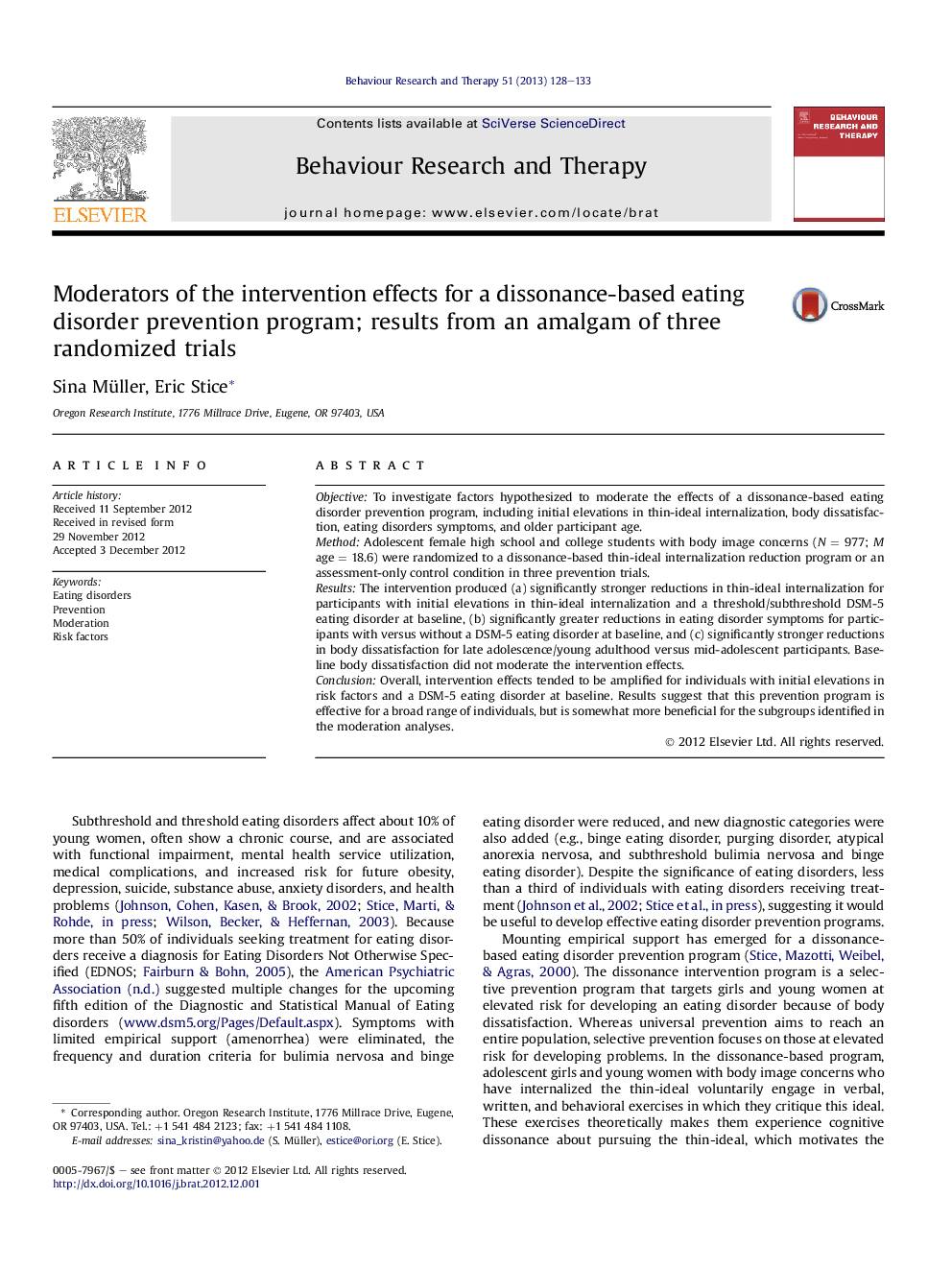| Article ID | Journal | Published Year | Pages | File Type |
|---|---|---|---|---|
| 901897 | Behaviour Research and Therapy | 2013 | 6 Pages |
ObjectiveTo investigate factors hypothesized to moderate the effects of a dissonance-based eating disorder prevention program, including initial elevations in thin-ideal internalization, body dissatisfaction, eating disorders symptoms, and older participant age.MethodAdolescent female high school and college students with body image concerns (N = 977; M age = 18.6) were randomized to a dissonance-based thin-ideal internalization reduction program or an assessment-only control condition in three prevention trials.ResultsThe intervention produced (a) significantly stronger reductions in thin-ideal internalization for participants with initial elevations in thin-ideal internalization and a threshold/subthreshold DSM-5 eating disorder at baseline, (b) significantly greater reductions in eating disorder symptoms for participants with versus without a DSM-5 eating disorder at baseline, and (c) significantly stronger reductions in body dissatisfaction for late adolescence/young adulthood versus mid-adolescent participants. Baseline body dissatisfaction did not moderate the intervention effects.ConclusionOverall, intervention effects tended to be amplified for individuals with initial elevations in risk factors and a DSM-5 eating disorder at baseline. Results suggest that this prevention program is effective for a broad range of individuals, but is somewhat more beneficial for the subgroups identified in the moderation analyses.
► The Body Project produced larger effects for youth with elevated thin-ideal internalization at baseline. ► The Body Project produced larger effects for youth with threshold/subthreshold eating disorders at baseline. ► The Body Project also produced larger effects for older adolescents than for younger adolescents. ► The Body Project is effective for a wide range of persons, but somewhat more effective for the subgroups identified herein.
